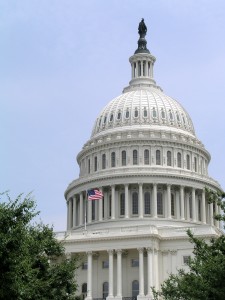 You’ve likely heard by now the story of freshman Louisiana Congressman Vance McAllister (R-La.) kissing one of his staffers. Now, Rep. Jackie Speier (D-Calif.) is trying to make it so that Representatives and their staffs have to undergo mandatory sexual harassment training.
You’ve likely heard by now the story of freshman Louisiana Congressman Vance McAllister (R-La.) kissing one of his staffers. Now, Rep. Jackie Speier (D-Calif.) is trying to make it so that Representatives and their staffs have to undergo mandatory sexual harassment training.
Unlike the rest of the federal government and many private companies, there is no specific requirement in place that requires U.S. Representatives and their staffs to receive sexual harassment training. And unlike many of your own workplaces, there aren’t posters and signs in break areas reminding workers of regulations and how to report unwanted conduct. Many offices don’t even discuss sexual harassment policies at all. The Senate has training courses for new employees, but several different policies can apply. The House has no training schedule, but has handbooks.
Frustrated by the seemingly haphazard way these regulations have been put in place in Congress, Rep. Speier said “This is the House of Representatives, not a frat house.” She continued, “it is time for all of us to get trained – elected officials and their staffs – to recognize what sexual harassment is, and how to prevent it, and what to do if it happens.” Other lawmakers have expressed concern about these kinds of problems in the past.
 Virginia Employment Law Blog
Virginia Employment Law Blog

